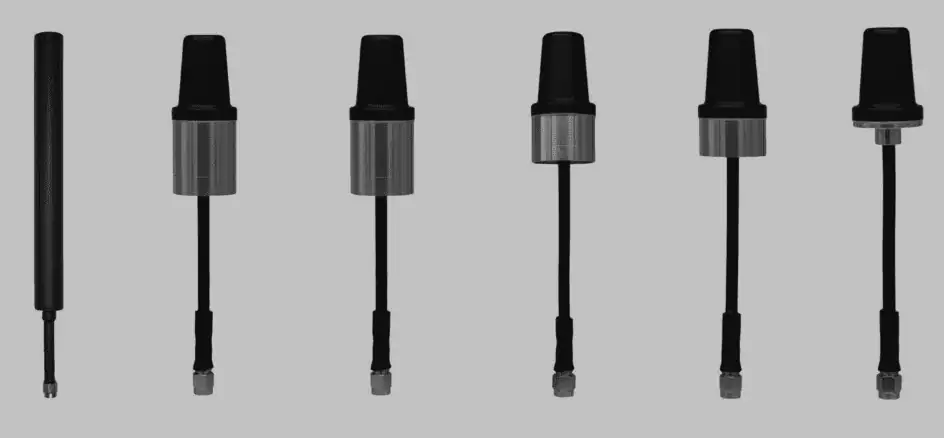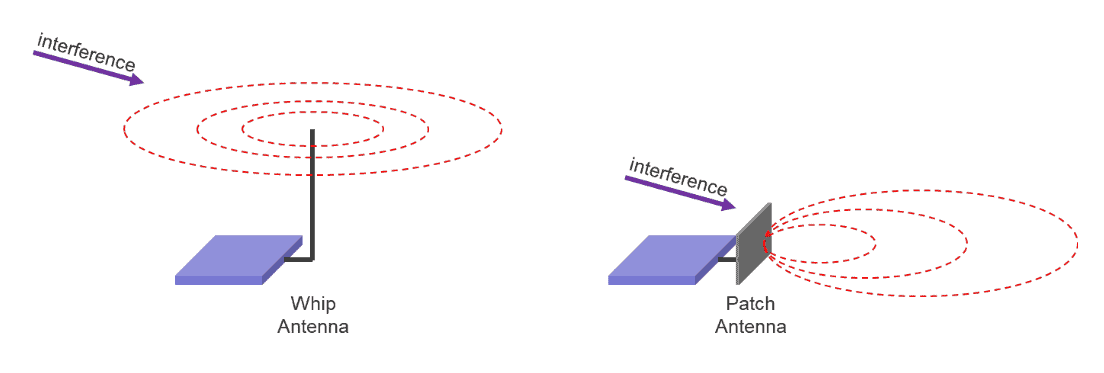In this guide to selecting antennas for UAS (unmanned Aerial Systems) Doodle Labs outline the important role antennas play in achieving maximum performance from Doodle Labs radios as well as providing general antenna recommendations for UAS use cases.
Important things to consider when selecting an antenna are:
- Center Frequency, Bandwidth, VSWR, Impedance
- Antenna Gain, Radiation Pattern and Beam Width
- Polarization (single or double)
- Type of antenna, choice of ground plane
Center Frequency, Bandwidth and VSWR
- Choose an antenna with the correct operating frequency and bandwidth and with a good VSWR.
- Doodle Labs Radios are designed to work with 50 Ohm impedence for best matching. There can be a big impedence variation even in the antennas that are specified for 50 Ohms. So choose a good quality antenna.
- Check the radiation pattern to make sure it meets the application requirements.
- Avoid using the 75-ohm impedance (TV antennas for example).
Antenna Gain, Radiation Pattern and Beam Width
In the same way that sound can be focused using a megaphone, RF waves can be focused by antennas. The antenna gain is the amount of amplification of the signal. The radiation pattern describes the direction in which the RF waves are focused. The beam width describes the angle over which the radio waves are focused within 3dB of the peak gain.
Choosing an appropriate antenna gain requires a link-budget calculation. Based on the network capacity and link distance required, you can calculate the required antenna gain. Also note that there are many factors which can affect RF propagation loss such as reflections off large objects, and Fresnel Zone clearance. Have a look the Application Note, “Optimizing the RF Link” in our Technical Library.
Some antennas like the patch antenna, and the parabolic dish antenna focus RF waves in a cone shape and can provide very high antenna gain. Such antennas need to be pointed towards the intended target.
High gain omni-directional antennas focus RF waves in a horizontal plane like a pancake, and offer much less gain in the vertical direction.
Polarization
Antennas are either linearly polarized (horizontal, or vertical), or circularly polarized (CP). The polarization refers to the physical orientation of the RF waves, and antennas which are polarized vertically cannot receive horizontally polarized RF waves. The polarization of an RF wave can change as it reflects off of the ground or objects, so in order to guarantee reception, mount the antennas with both polarizations covered.
CP antennas can be right-hand or left-hand circularly polarized. RHCP antennas cannot receive LHCP RF waves. CP antennas receive linearly polarized RF waves with a 3-dB penalty.
Selecting Antennas for UAS
The choice of the correct antennas for UAS is a critical factor in determining the overall link performance. Typically the UAS is moving and regularly changing it’s orientation. As a result, omni-directional antennas are usually used on the UAS. Size and weight are other important criteria for UAS. Hence small 2-3 dBi Dipole or Monopole antennas are used. Monopole antennas can be very small but keep in mind that they must be mounted on a ground plane.
Mounting Considerations for UAS
Because of the high mobility of the UAS, mounting the antennas is a very important consideration.
- Use 2×2 MIMO antennas to get better diversity from the moving vehicle.
- Ideally the antennas should be mounted at least 1⁄4 wavelength apart (if possible 1⁄2-
wavelength) so that they do not modify each other’s radiation pattern. For example, at 900 MHz, the wavelength is 33 cm (13 inches). So the antennas should be at least 9 cm (3.5 inches) apart. More separation is advised. - The antennas should be mounted in a V-shape for diversity and to capture the scattered polarization of the RF signals.
- The antennas radiation pattern should be pointing downwards and outwards to communicate with the GCS.
- Often the body of a UAS is made of carbon fiber which is weakly conductive. The body of the UAS can block/reflect RF waves, and may even modify the radiation pattern of the antenna. Care must be taken so that the antenna radiation is not blocked by the UAS body.
- We recommend testing the antenna mounting by flying the UAS 10-20 meters in the air and then rotating it while observing the RSSI value from the radio.
Selecting Antennas for the GCS
Typically the GCS is in a fixed location, and it is possible to use larger and higher gain antennas to increase the range. The antennas should have their radiation pattern pointing upwards and outwards. Care should be taken to ensure that the UAS is always within the antenna radiation pattern. 6 dBi Omni antennas are good for short to medium range operation. For long range links, directional antennas can provide a good solution and for very long range links, tracking dish antennas can be considered.
Recommended Antennas
When choosing antennas, choose a reputable manufacturer, and avoid low cost antennas, or antennas which do not have a full list of specifications. If the antenna is very small (smaller than 1⁄2 a wavelength), then you should be skeptical of it’s performance.
Ideally the antenna datasheet should include radiation patterns so that you can verify it’s uniformity. If the radiation pattern isn’t shown the manufacturer may simply indicate the peak antenna gain, and that may not be useful in a real world deployment. The VSWR should ideally be less than 2:1. The saying “you get what you pay for” is particularly true for antennas.
Doodle Labs Antennas
Doodle Labs offers antennas which are optimized for use with Doodle Labs radios for various frequency bands. These antennas are included in the radio Evaluation kit and available for volume purchase.












